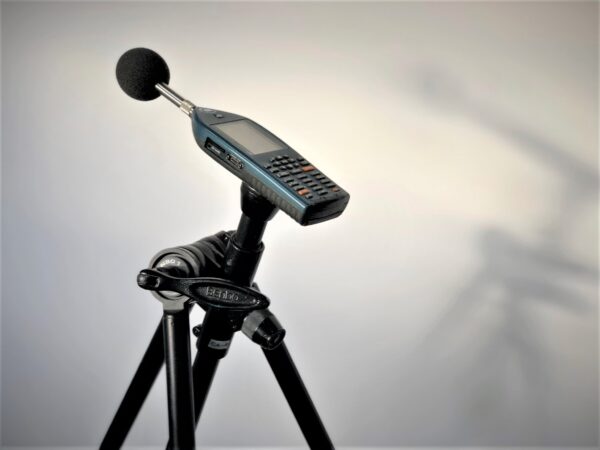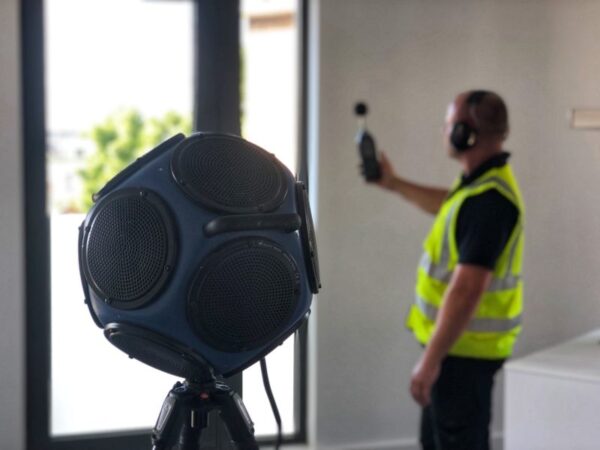Airborne sound testing is undertaken to walls & floors. Firstly a controlled noise is generated by an amplifier and loudspeaker across a broad range of frequencies. The generated noise is very loud and is often in excess of 100dB. Initial measurements are taken using a Norsonic class 1 sound level meter within the ‘source room’ followed by further measurements in the ‘receiver room’ on the other side of the wall or floor under investigation.

The source room speaker position is then changed and the measurements repeated either side of the partition under test. Thereafter background noise measurements are made using a class 1 sound level meter in the receiving room and are used to apply appropriate corrections for external sound such as traffic noise. Similarly the reverberation time (the time taken for sound to decay by 60dB) is measured within the receiving room using the sound source and a sound level meter to determine the corrections that must be applied to account for the characteristics and absorptiveness of the room.
The difference in the two airborne noise levels (for walls and floors), corrected for background and reverberation characteristics determines the airborne sound insulation performance of the wall, or floor. A greater airborne noise difference between the source room and the receiver room determines a higher airborne sound insulation performance and the higher chance of compliance with Approved Document E.

We can fulfill your sound testing requirements
We have undertaken thousands of sound insulation testing in London and the UK and have a large amount of experience with helping clients with their acoustic design to achieve compliance with approved document E.
If you would like more information on airborne sound testing then please visit our contact page or call Darren on 07775623464 or email us on info@aptsoundtesting.co.uk
